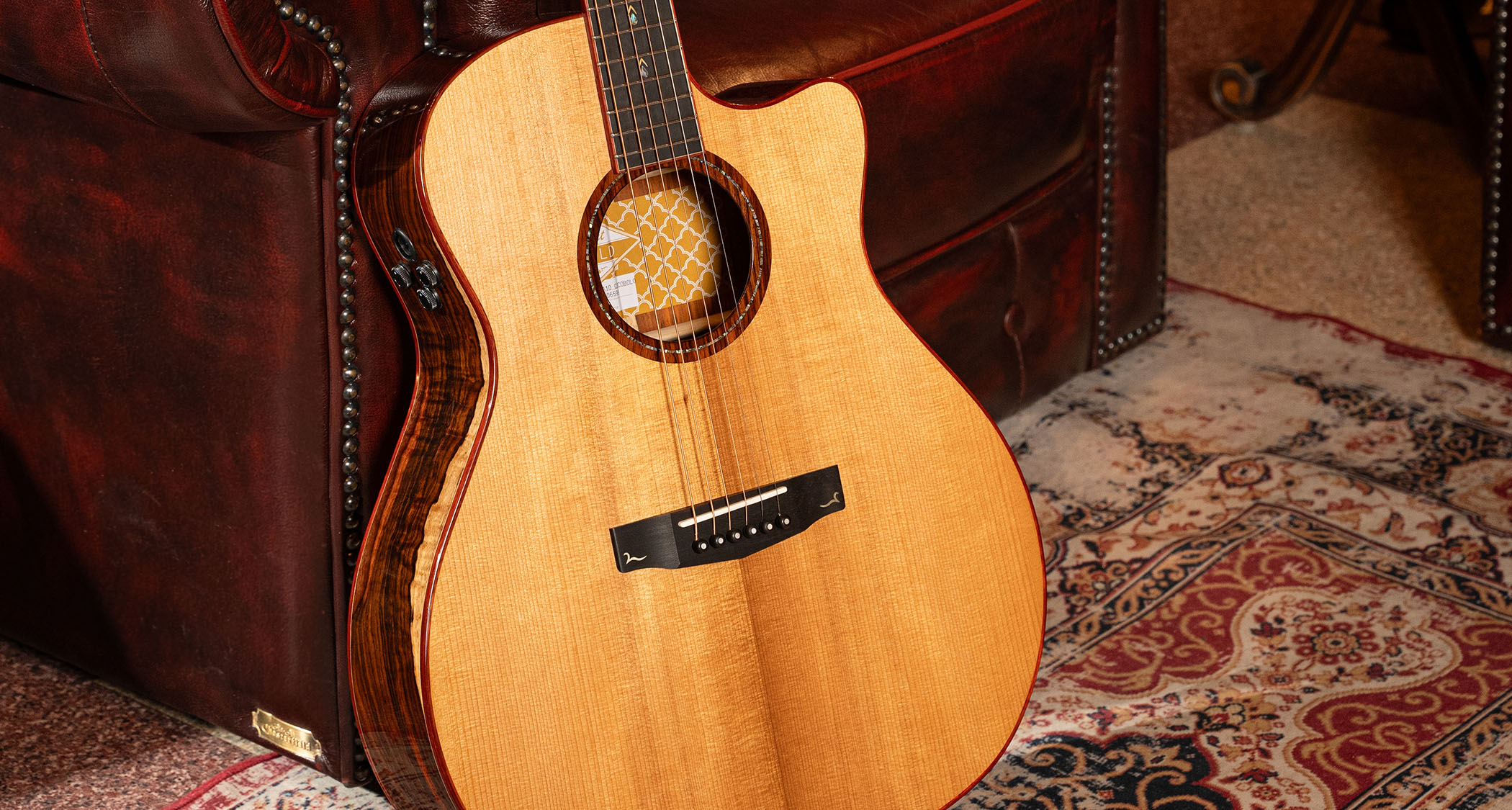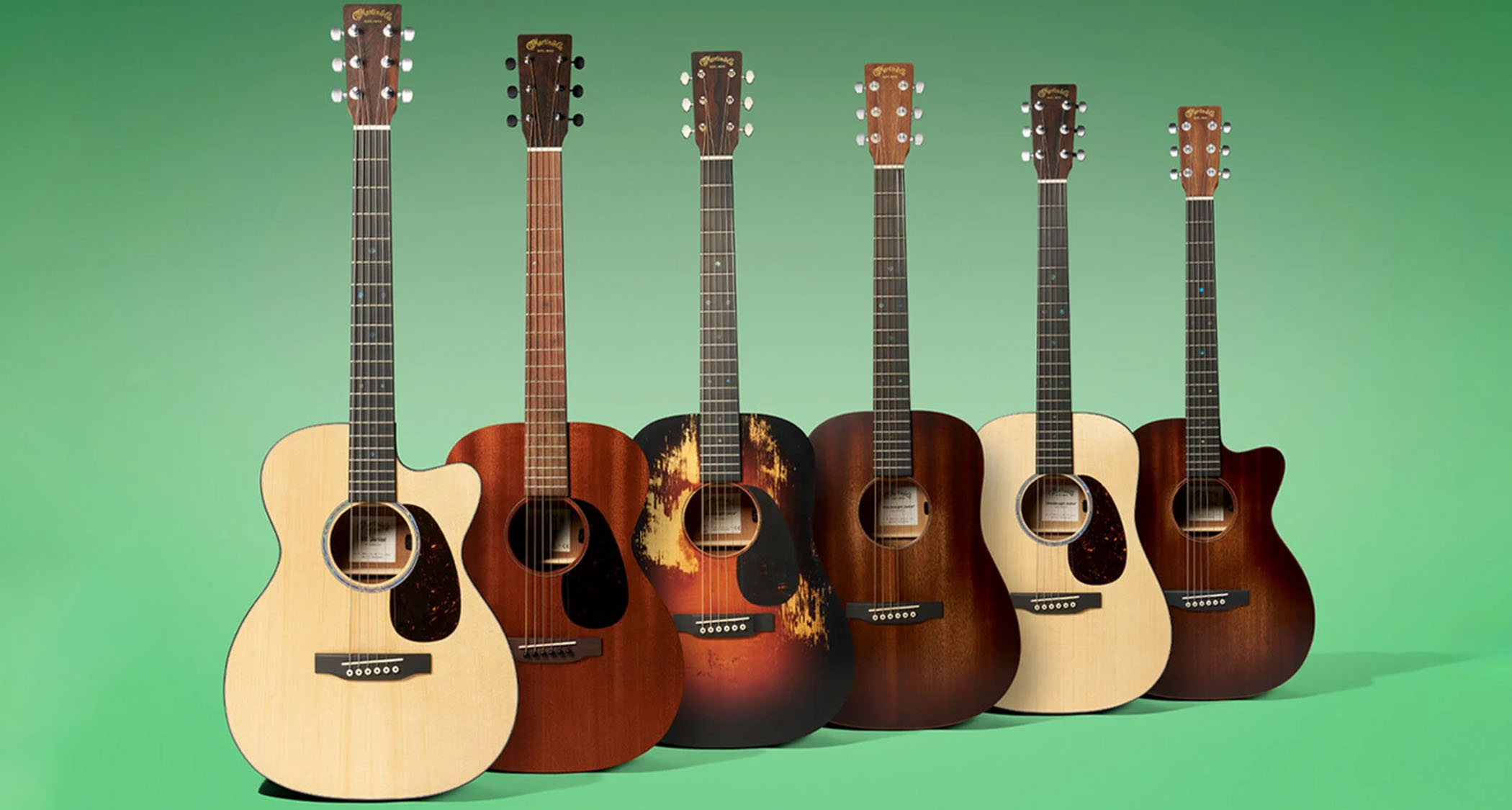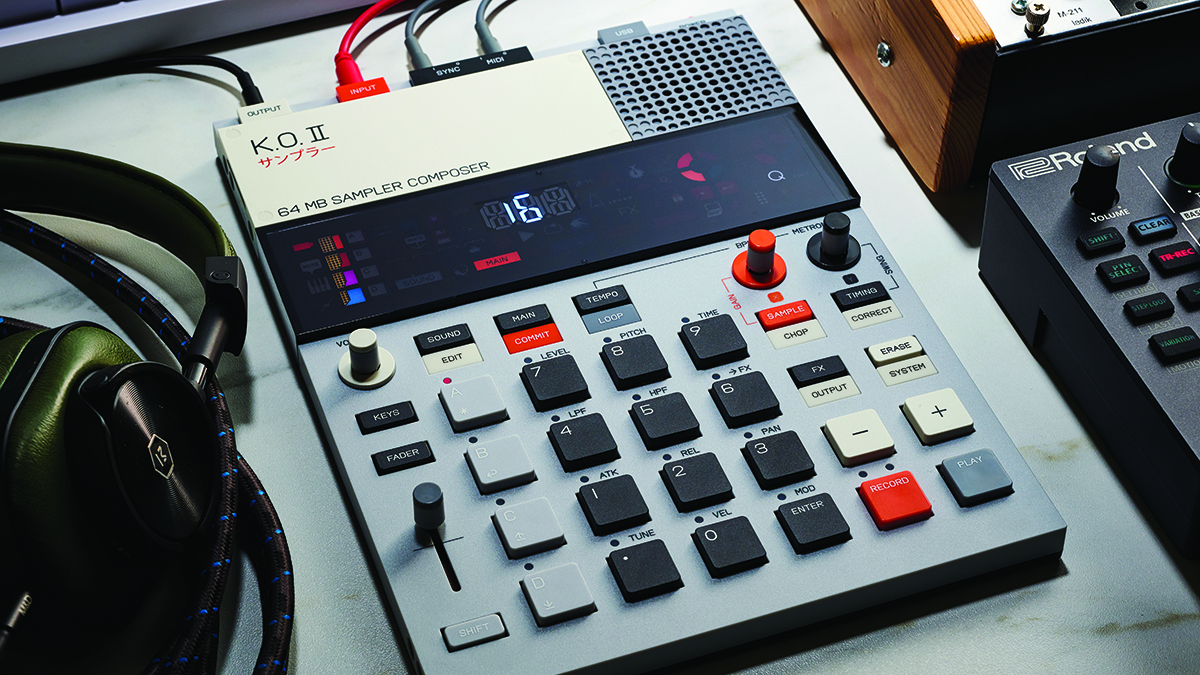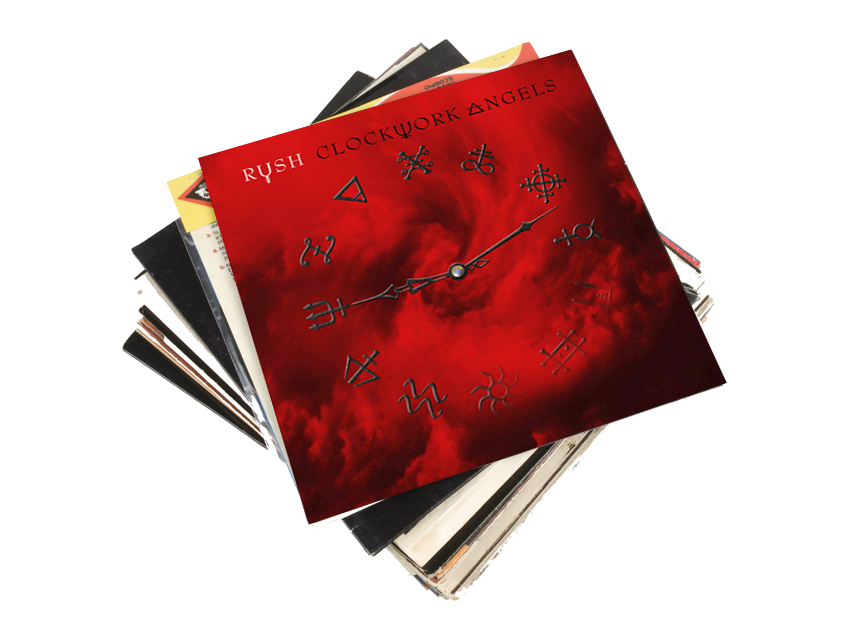
Alex Lifeson talks Rush's Clockwork Angels track-by-track
“We wanted something that was bold and stripped down,” says guitarist Alex Lifeson of Rush’s Clockwork Angels. “The goal was to make it real in your face and very much the sound of a three piece – a hard rock record in the classic sense. I’m happy to say that it really did come out the way we anticipated and hoped for.”
Prior to recording the bulk of the album, Lifeson and his Rush mates – bassist-vocalist Geddy Lee and drummer-lyricist Neil Peart – got together with co-producer Nick Raskulinecz (whom they collaborated with for 2007’s Snakes & Arrows) in Nashville and knocked out a smashing pair of teasers, Caravan and BU2B, both of which make the full set in remixed form (the latter song has a previously unheard intro).
After the group wrapped the Time Machine tour last fall, they hunkered down with Raskulinecz in Toronto to wade through the various demos and jams that Lifeson and Lee had been amassing. Several weeks into the sessions, a storyline by Peart emerged, one based in a dystopian steampunk world and fusing sources such as Joseph Conrad, Voltaire and Daphne Du Maurier.
“It is a concept record,” says Lifeson. “We haven’t done something like this in a while. All of our albums are thematic, but this is a little more direct. I think the songs stand on their own, though. I can listen to them independently of the story, but when I hear everything from front to back, it really makes sense to me. So it works on lot of levels.”
Despite its conceptual core, Clockwork Angels never gets weighed down by plot. The songs race by, packing considerable musical jabs and kicks as they go, and they’re aided by a mix that is knock-down heavy but surprisingly airy.
When it came to recording his tracks, Lifeson says that he kept it simple: “I tried to pull myself back from yielding to the temptation of layering so many guitars and things that are kind of inconsequential. It’s really about the basic rockiness of the songs, so it was a lot of double-tracking and beefing things up. No six tracks of guitars, no rhythm guitar and solos – simple little changes that made the sound more impactful.”
Lifeson awards high marks to his bandmates, noting that the process of marrying music to words isn’t always an easy one: “A lot of times, Ged would look at something and say to Neil, ‘I love that line, that phrase. Can we use that as our staring point and kind of rebuild around it?’ That’s a big, big deal. And as always, Neil came through – he never complained.”
Although Rush are revered for their superlative instrumental chops, Lifeson says that he’s most happy with Clockwork Angels for its overall tunefulness. “Let’s face it, the payoff to any song is the chorus,” he says, “and these songs have very strong choruses. If you can create something that’s memorable in terms of melody and ‘singability,’ then you’ve nailed it. And I think we did that – a lot.”
Rush's Clockwork Angels will be released on 12 June. On the following pages, Alex Lifeson walks us through the record track-by-track.
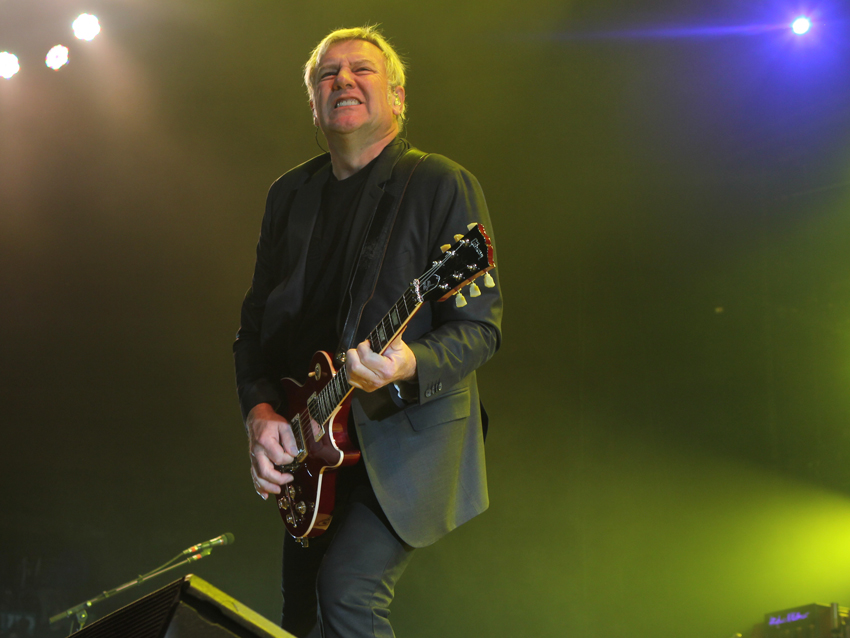
Caravan
“This song was written quite some time ago; it’s been a couple years now. We played it on tour, and it grew throughout the process.
“I like it because it’s got a great riff and some quirky keyboard stuff. It was nice to revisit the track and remix it for the album with fresh ears. We talked about rerecording it, but there wasn’t much point – we were happy with the performances and the sound. We did think that it could use a remix so it could connect more to what the album is now. The perspective changed a little bit.
“It’s funny – people say to me, ‘I hear new parts in the song. Did you rerecord it?’ The shift of the emphasis on different instruments creates that.”
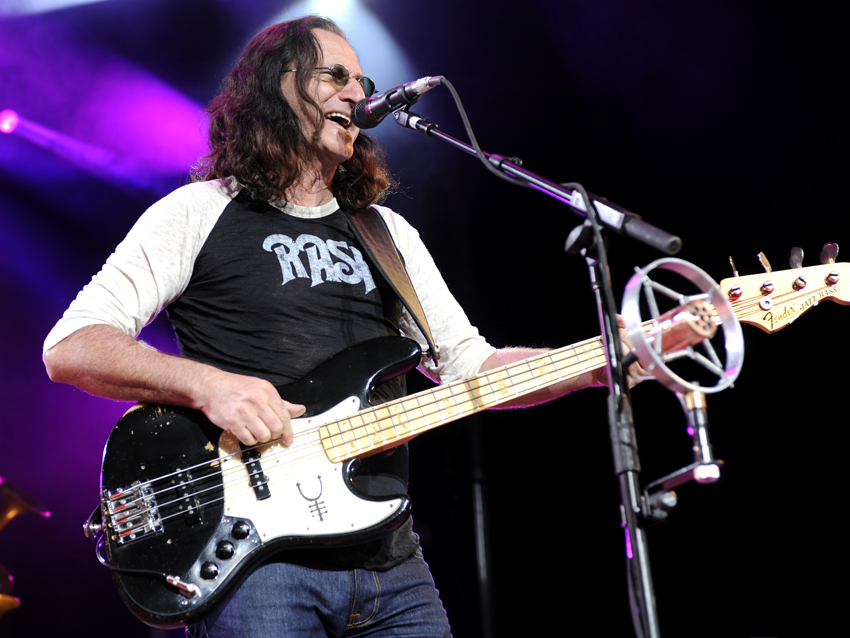
BU2B
“I love BU2B for its heaviness. It’s huge in the old Zep way – it’s got that big, blues-oriented riff. The chorus is very energetic, and the sentiment of the lyrics really sets it up for what’s coming.
“For guitars, I used a ’59 Les Paul and a Tele, and it’s one of the songs where I layered them. There’s probably six tracks of guitar.
“I recorded a new opening that wasn’t on the version we put out last year. For people who don’t know, mixing can be terribly tedious – it’s hurry up and wait. Ideally, you want to be out of the room and come in when the mix is ready so that you can be very objective about it.
“Consequently, there’s a lot of sitting around and ‘Hmm, what am I going to do today?’ I had Logic set up in my hotel room, and I was goofing around and doing some writing. I had a few guitars – there was one of my Axcess models and a Martin I borrowed from the Guitar Center – and I got a mic. We had talked about doing this little segue, so we stuck the mic outside my balcony and recorded some background sounds: Los Angeles in the morning, cars going by, stuff like that.
“With the balcony doors open, I did a little guitar pass, and then Ged did his vocal thing. We messed around with a few effects and created the piece. It was all done very spontaneously in just a few minutes in my room.”

Clockwork Angels
“I was just messing around at home and came up with a pretty lengthy piece, and most of it’s what Clockwork Angels turned out to be.
“Ged and I both like to work on a day. We don’t really bring stuff in, nor do we refer to soundcheck jams any more. We’re both just excited to start on something new. But I had this thing floating around, so I gave him a copy of it, and he really liked it and saw great potential in it. We rearranged it and developed some of the parts a little bit more in the verses. From there, the song just came together.
“I love the strumming in the verses; it’s so energetic. And the pre-verse sections are so dreamy; they take you to another place. There's also that blues section in the middle, which comes out of nowhere, but it really emphasizes the lyric. And then it just falls back into that beautiful, climbing arpeggio. It gives me goose bumps every time.
“Near the end, there’s a vocal harmony that Ged does that almost sounds like a prayer. He sang it for one of the other parts, but it got flipped around. I think Nick is responsible for that. He said, ‘Hey, check this out,’ and we listened to it and figured, ‘Oh, we have got to have that in there.’ It’s really nice, especially since you don’t know where it’s from.”
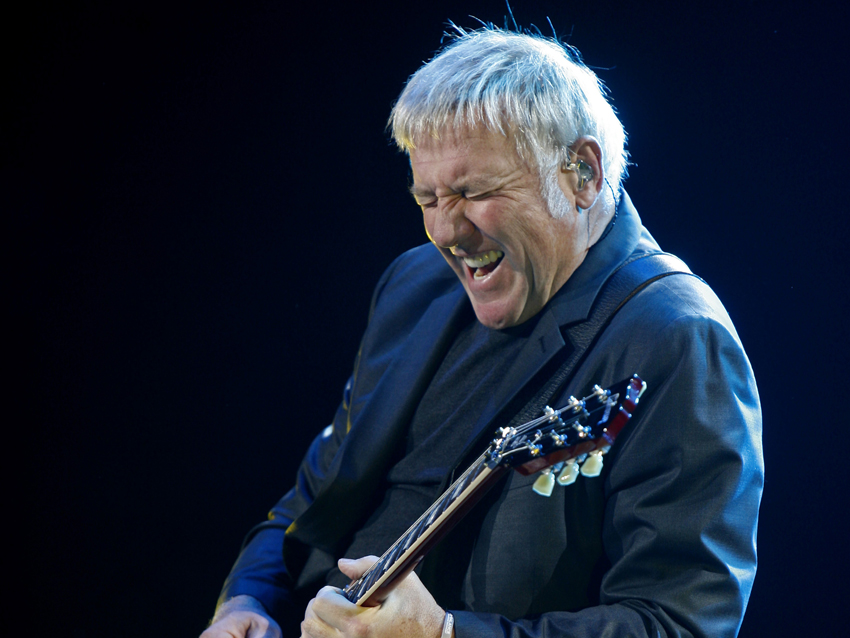
The Anarchist
“I think The Anarchist might be one of the first songs we wrote for the record. It goes back a couple of years. So far, the response has been quite strong, which I didn’t really expect. It’s an in-your-face song, and it’s a powerful part of the whole suite.
“If you listen to the demo and the final version, they’re pretty close, although a couple of things are different. There’s an instrumental melody line that Nick got us to think about that really gives the song its signature. The rest of it is pretty much the same as it was on the demo. It has an Eastern influence, which is somewhere we’ve gone before; it’s something we all feel and like a lot.
“The way that Neil and Nick approached the drum arrangements was great. Typically, after we’ve written everything, I make copies of songs for Neil with drum programs or click tracks so that he has some reference points that he might want to use or develop. So he goes through the songs methodically, works on his drum arrangements, and he memorizes what he’s going to play. It takes a month or so, and after that we go about recording.
“This time around, Nick came in and said, ‘I want to record on the first day. Let’s put up a song, and you’ll learn it while playing it. We’ll do a bunch of takes and see where it goes.’ I think it was an incredibly challenging way for Neil to work, but he’s the kind of person who constantly needs new challenges in his life. And really plays like crazy on the record – he’s very, very free. Of course, he’s got his work cut out for him because he’s got to learn everything to play live.”
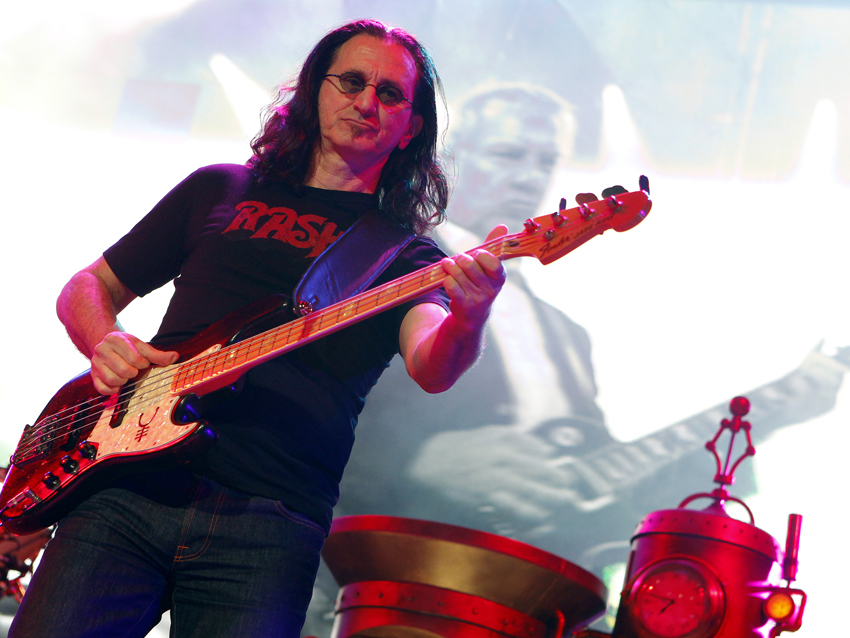
Carnies
“I love the opening riff with the cool harmonics. It’s got a little bit of Hendrix or Robin Trower. The choruses are strong. The carnival-type vibe and the sounds make them quite different from the verse and bridge sections.
“The climbing bridge is reminiscent of something, but I don’t know what it is. A lot of moments on the album are like that: I’m reminded of something, but I couldn’t tell you what song it is or what era it’s from. That’s a great thing, though – people gravitate to that.
“Take Bryan Adams, for example: a lot of his writing had that quality. He used melodies from other songs, and it was very successful for him. You’d listen to his music and take comfort in the familiarity; therefore, you felt familiar with him.
"This song has that same thing going on. It even takes me back to The Beatles, but I can’t say that we’ve listened to a Beatles record and said, ‘Let’s do that!’ Still, there’s something in the choruses that recalls the era of the ‘60s.”
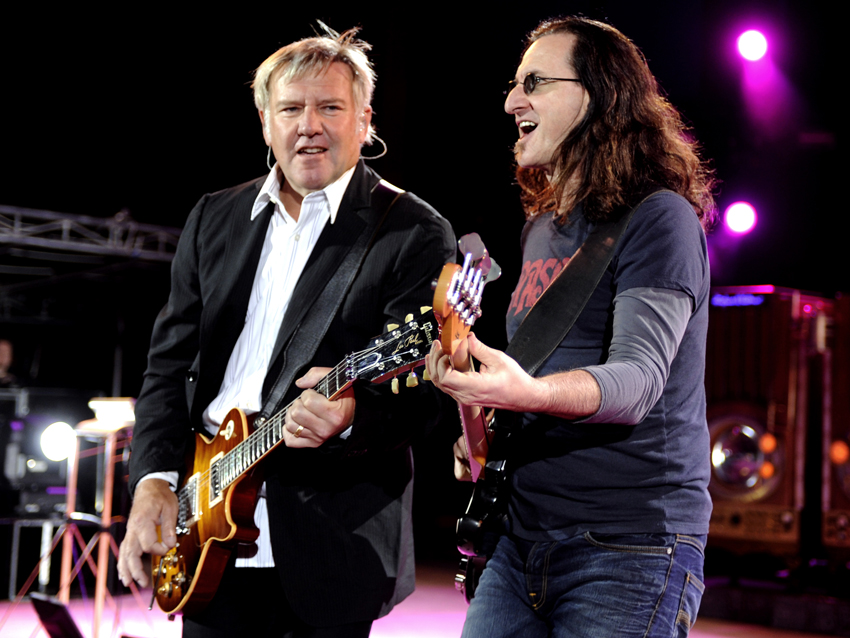
Halo Effect
“I think we were going in a different direction with Halo Effect. I remember we were in our little control room – we had three different rooms going at one time – and I picked up an acoustic and started playing. Geddy began mouthing the lyrics, and then something clicked: he started playing along, and we just developed the song from there.
“The song is really about the emotional decisions we make that don’t work out. Quite often, it’s in a relationship – you think you see something, but it’s not really there. So the song had to be sweet and it had to be heavy at the same time. We needed those two contrasts. I think we nailed it.
“There’s such a great acoustic sound on it, and the solo section is something that’s quite different for us. It’s frivolous and light, kind of like butterflies in your stomach, that feeling you get when you’re in love with someone you shouldn’t have fallen in love with.”
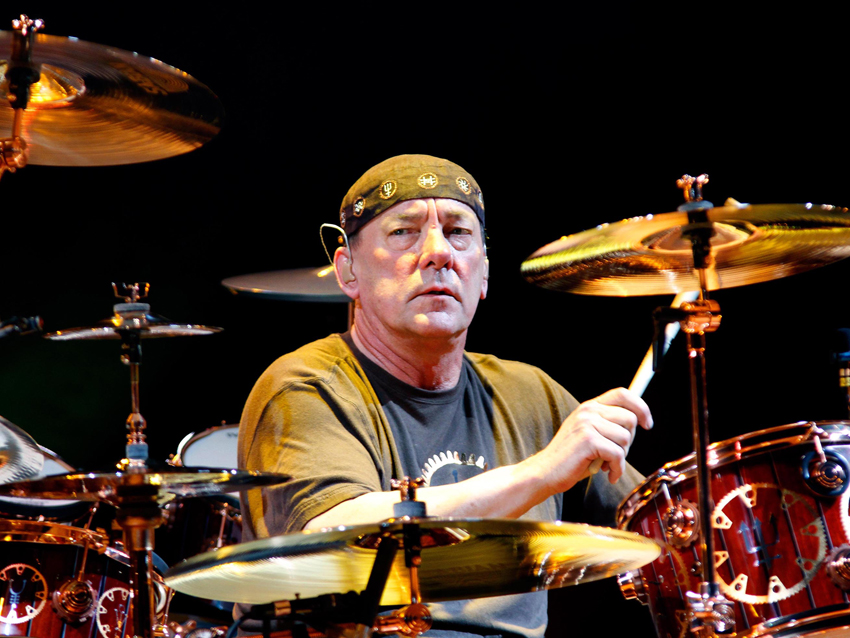
Seven Cities Of Gold
“We so got into this one. It started in the pre-studio writing stage, right when we were catching up and reviewing things at Ged’s place in September. We had some songs, but we wanted to get a few more things written before going into the studio in October.
“We spent the first week just drinking coffee and throwing the idea around that maybe we weren’t ready to record. I remember we went downstairs and didn’t really do anything for a couple of days, except drink more coffee and talk.
“And then we had what we call our ‘good six minutes.’ That’s all you need, a good six minutes a day. From there, the song took off. We started with the whole feedback thing, which is pretty cool. The idea was to do something from the hip and get real snarky and strident.
“It’s also very cinematic: You can hear the danger of the big city as our traveler approaches. Then when Neil comes in and we break out the riff, you’re there – you’re in the city with all of its excitement and opportunity and trouble. The song has a swagger to it. It turned out exactly as I envisioned. I love the end… the guitar squealing and spitting as you leave the city.”
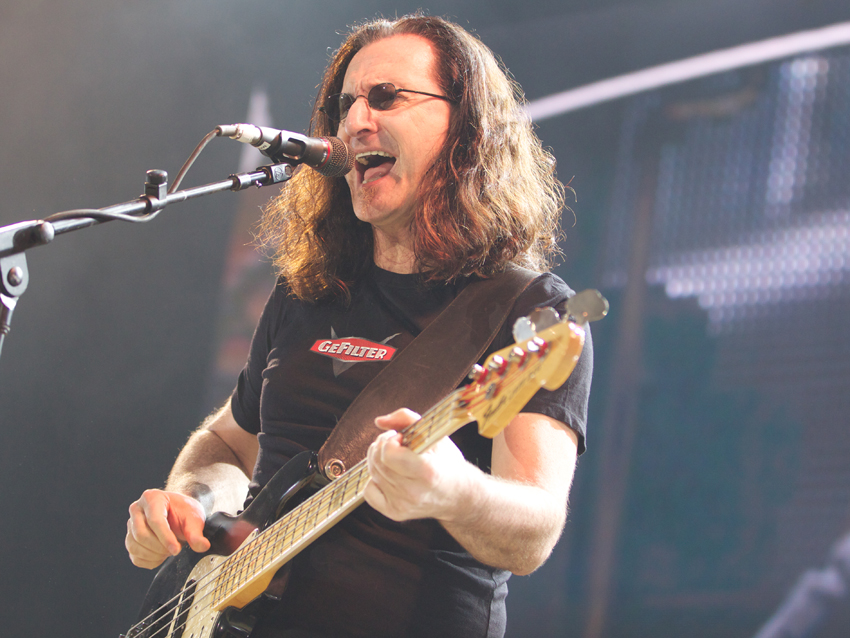
The Wreckers
“Ged and I traded instruments during the writing, but when we went in to record, we went back to our own instruments. We were both influenced by each other’s writing, which I think is a great testament to how we work. It was a very pleasant, productive experience.
“It’s interesting, because it was a struggle to get the verses to sit. The acoustics were too sweet; they didn’t feel right. There was a contrast that didn’t feel broad enough. So after a lot of hard work, we came up with the quick strumming and putting the harmonics in, and that created a beautiful moment.
“This is contrasted by the sound of a danger signal: Don’t accept everything at face value. Be careful. Things that might look so good could turn out to be the exact opposite. There’s a middle section where all the damage is done – I’m trying to explain it without getting into the whole story – and that came from one of our soundcheck jams. Once we got the strings and the bass pedals down, it all became such a visual moment in the song.
“The Wreckers has a real pop feel. It’s not heavy, but it’s emotionally tied to a strong rock presence. The verses are some of my favorite Rush moments ever.”

Headlong Flight
“We started riffing and got into a really great, long jam. It must have been hours. There were a million little parts flying around, all in the same key: E standard tuning.
“Afterward, we cut it up into pieces, took out the things we liked and moved them over to someplace else, and when we listened to it we were like, ‘Oh my God, we’ve got something really cool happening here! Should we make it an instrumental?’ But we decided that on this record, for the first time in a very, very long time, we weren’t going to have an instrumental.
“I think the music marries extremely well with the lyrics. There’s so many parts that are extremely dynamic. Most of all, we got to play like crazy. We wanted a song where we could stretch out like we do live with Working Man. We did shrink the middle section quite a bit. Originally, it had more of a jam thing going on, but we thought it was a little over the top, so we pulled it back. But there’s certainly more than enough there.”
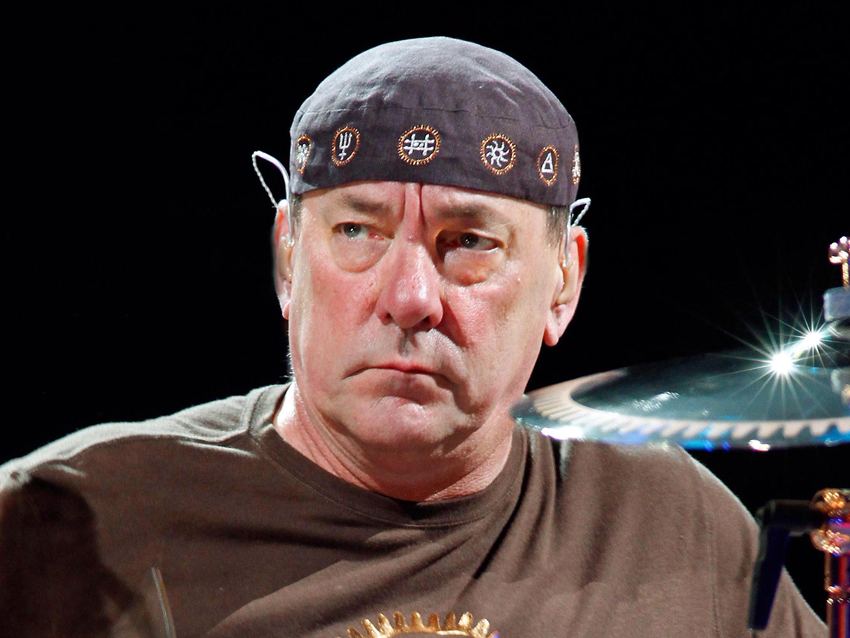
BU2B2
“This is a moment that’s integral to the story for Neil; he really wanted to have it in there. The problem was, we didn’t know how to approach it musically. Ged had done a vocal with some other stuff that we’d written, but he wasn’t happy with it, and neither was I.
“I decided to stay late one night, and I pulled out all the music and just kept the vocal. I listened to it a bunch of times, and then I created something more rhythmic – it was less musical but added a lot of tension.
“By the time that we got to developing it, the acoustic guitars that I originally had on it were replaced by strings. We put on some bass pedals and stuff like that, but overall we kept it all quite simple. It’s like a short chapter.”
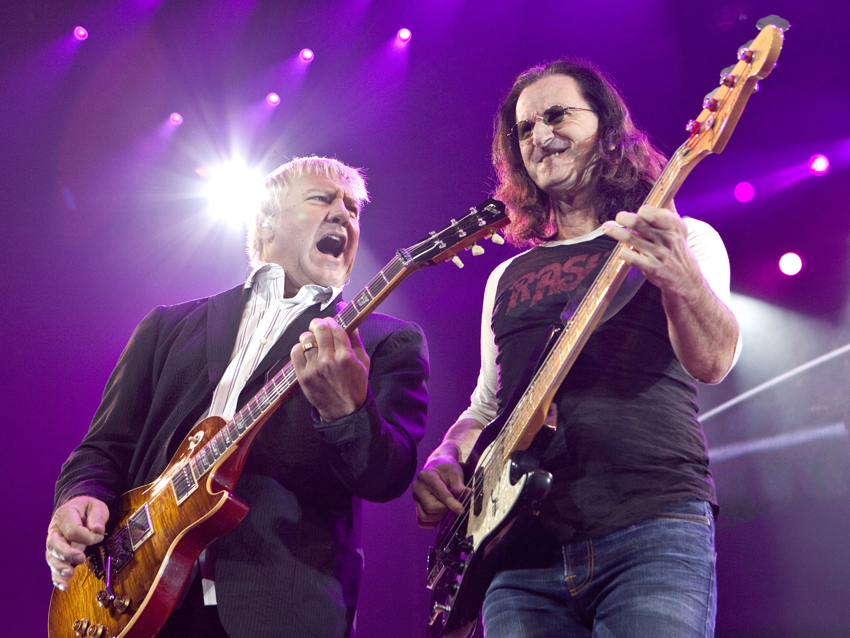
Wish Them Well
“We always loved the lyrics, but this was a tough song to figure out. The first version that we had was so far away from this one. It was a little more ethereal, with delays that were a la The Edge – too much so. We scrapped it and started working on something else that was quite different. And then we scrapped that, too – it just wasn’t right.
“It happens like that sometimes: you know when you’re forcing it. After the first two versions, we took a whole new approach, with the straight fours and a very traditional chordal progression. It really suited the lyrics. It was defiant, it was a strong statement, and it had enough interest in it to be interesting. Yet it was still very basic in its delivery, which I think is good on a record like this because of all its complexity.
“I love the way the guitar sounds. It’s huge and classic… a sick Marshall sound. Rich [Chycki] is such a terrific engineer.”
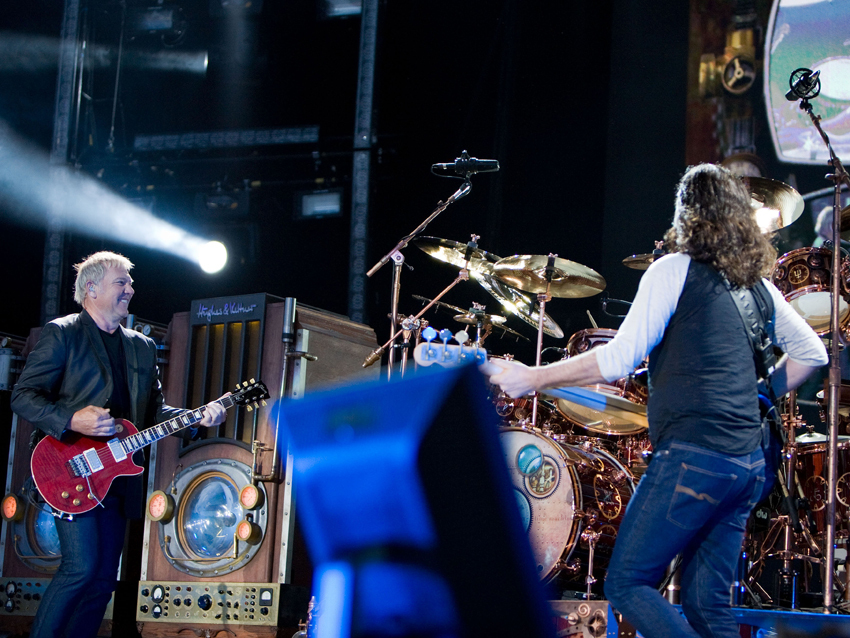
The Garden
“The Garden was one of the first songs we came up with for the record. Actually, Ged wrote most of it. He did some work one evening, and I came in the next day and heard that opening bass part and the verse. The idea was that we would keep it simple and heartfelt. The sentiment was very much about being at the end, of being retrospective, so there had to be a sweetness to it.
“Nick was a little wary of it getting too sweet, however. The demo was very acoustic. The piano parts were there, as were the strings, but everything was kind of soft. Nick wanted us to toughen it up some.
“We stepped in a little bit more on the bridges and the choruses – it doesn’t have the light strumming of the verses – and we developed the whole middle section. The solo is one of my favorites. It’s so suited to the rest of the music. When I listen to it, my eyes well up with tears. There’s something about it that grabs me, the way it fits in with the rest of music.
“The outro chorus keeps building and building and building… until it gets to that that final breath. It’s a great way to end the record.”

Joe is a freelance journalist who has, over the past few decades, interviewed hundreds of guitarists for Guitar World, Guitar Player, MusicRadar and Classic Rock. He is also a former editor of Guitar World, contributing writer for Guitar Aficionado and VP of A&R for Island Records. He’s an enthusiastic guitarist, but he’s nowhere near the likes of the people he interviews. Surprisingly, his skills are more suited to the drums. If you need a drummer for your Beatles tribute band, look him up.
"Reggae is more freeform than the blues. But more important, reggae is for everyone": Bob Marley and the Wailers' Catch a Fire, track-by-track
“Part of a beautiful American tradition”: A music theory expert explains the country roots of Beyoncé’s Texas Hold ‘Em, and why it also owes a debt to the blues
"Reggae is more freeform than the blues. But more important, reggae is for everyone": Bob Marley and the Wailers' Catch a Fire, track-by-track
“Part of a beautiful American tradition”: A music theory expert explains the country roots of Beyoncé’s Texas Hold ‘Em, and why it also owes a debt to the blues



